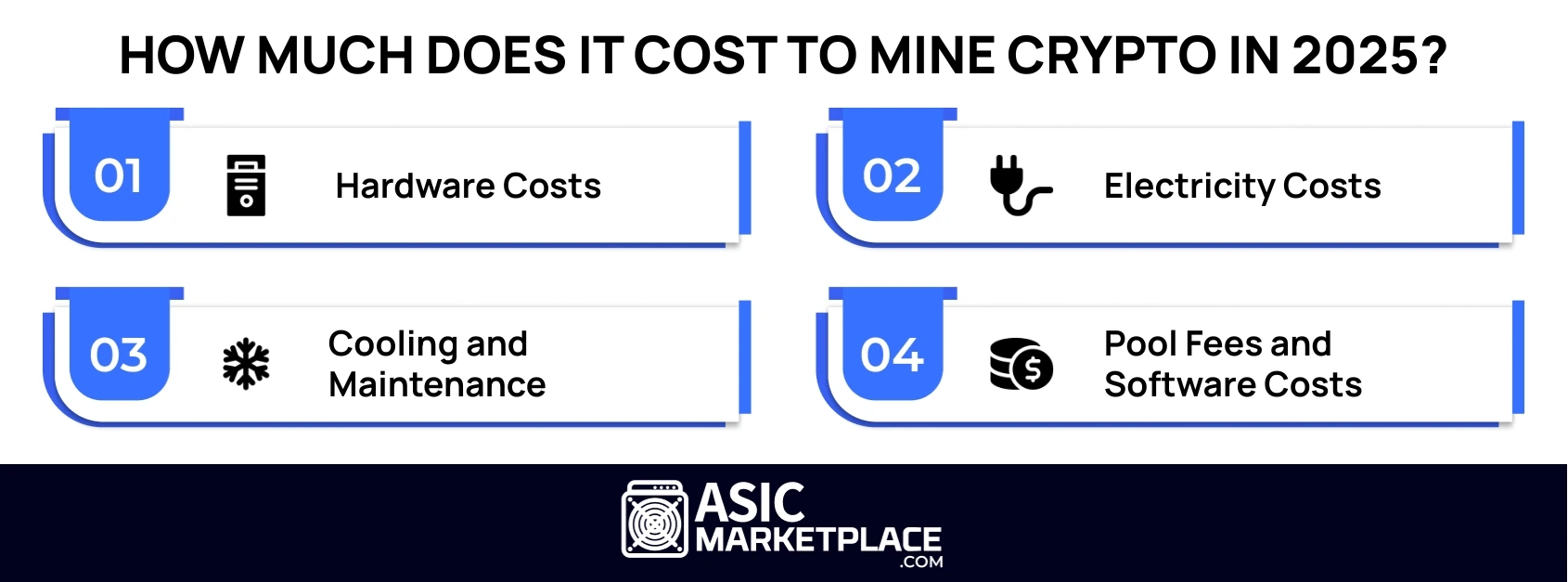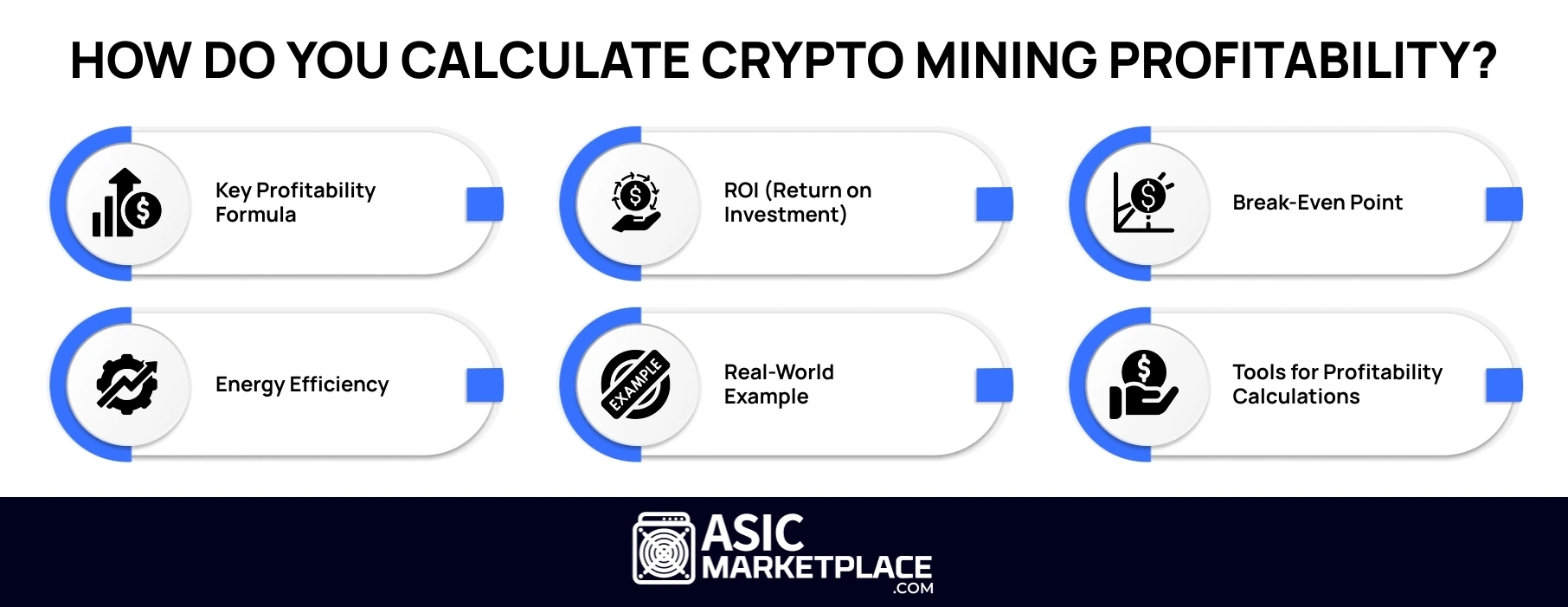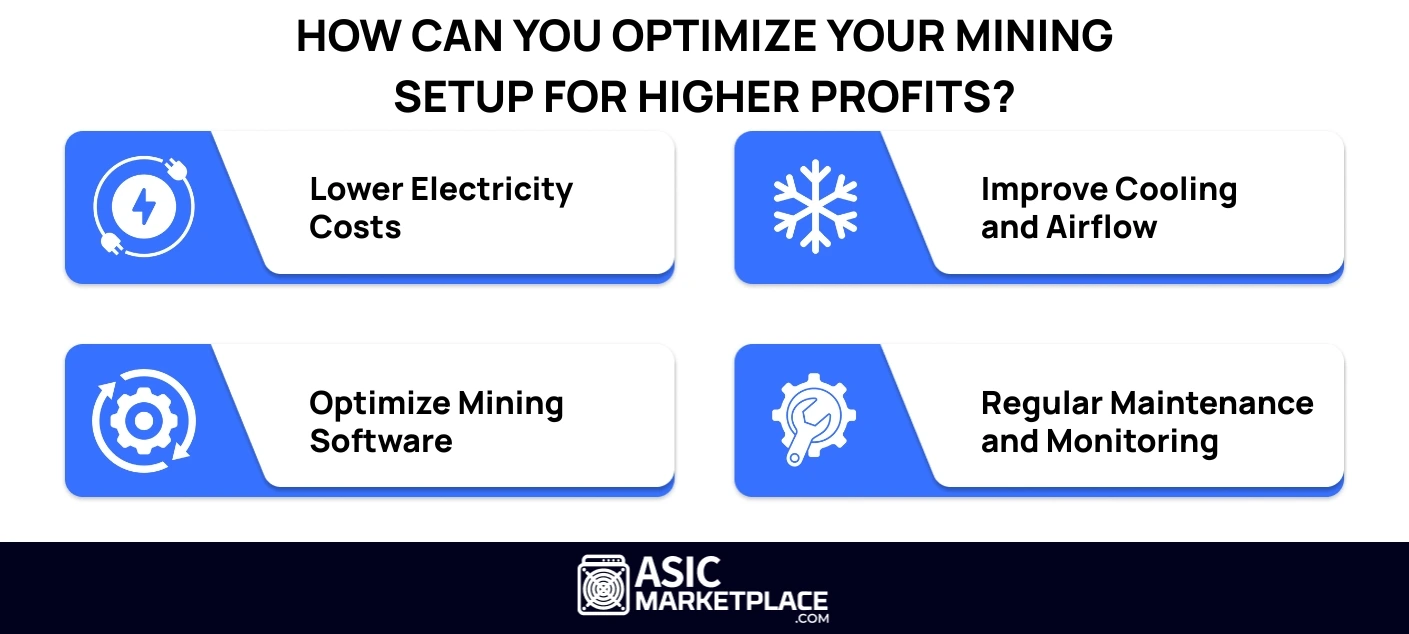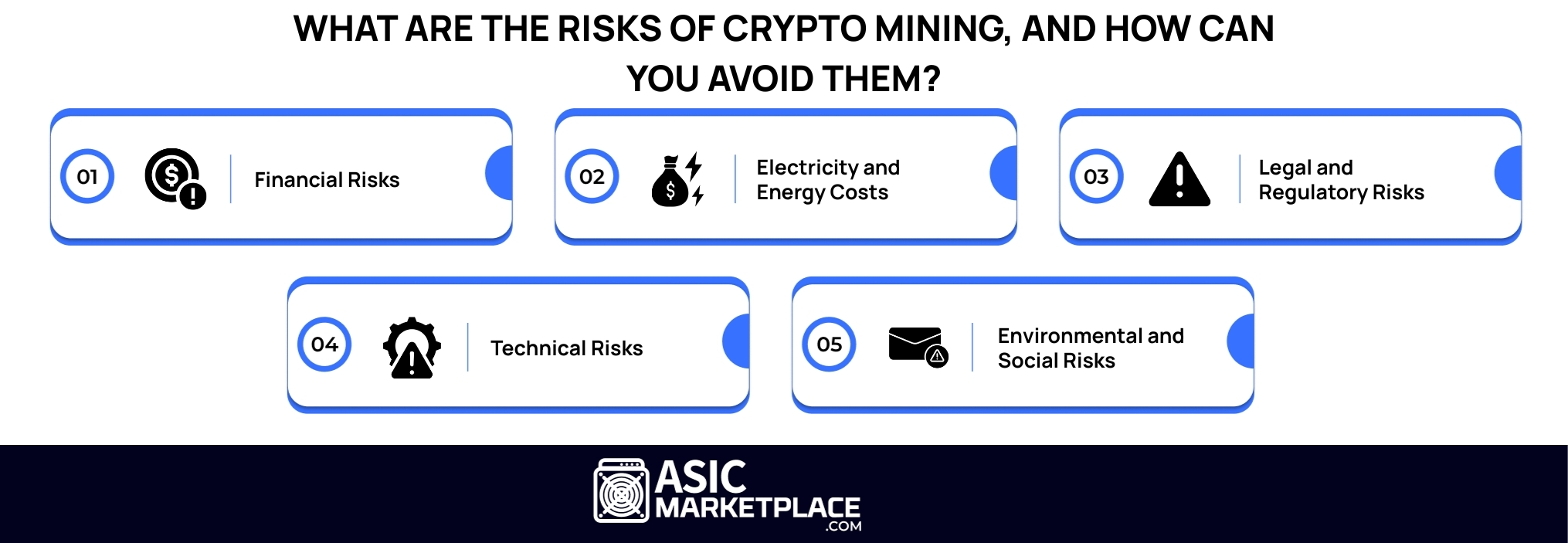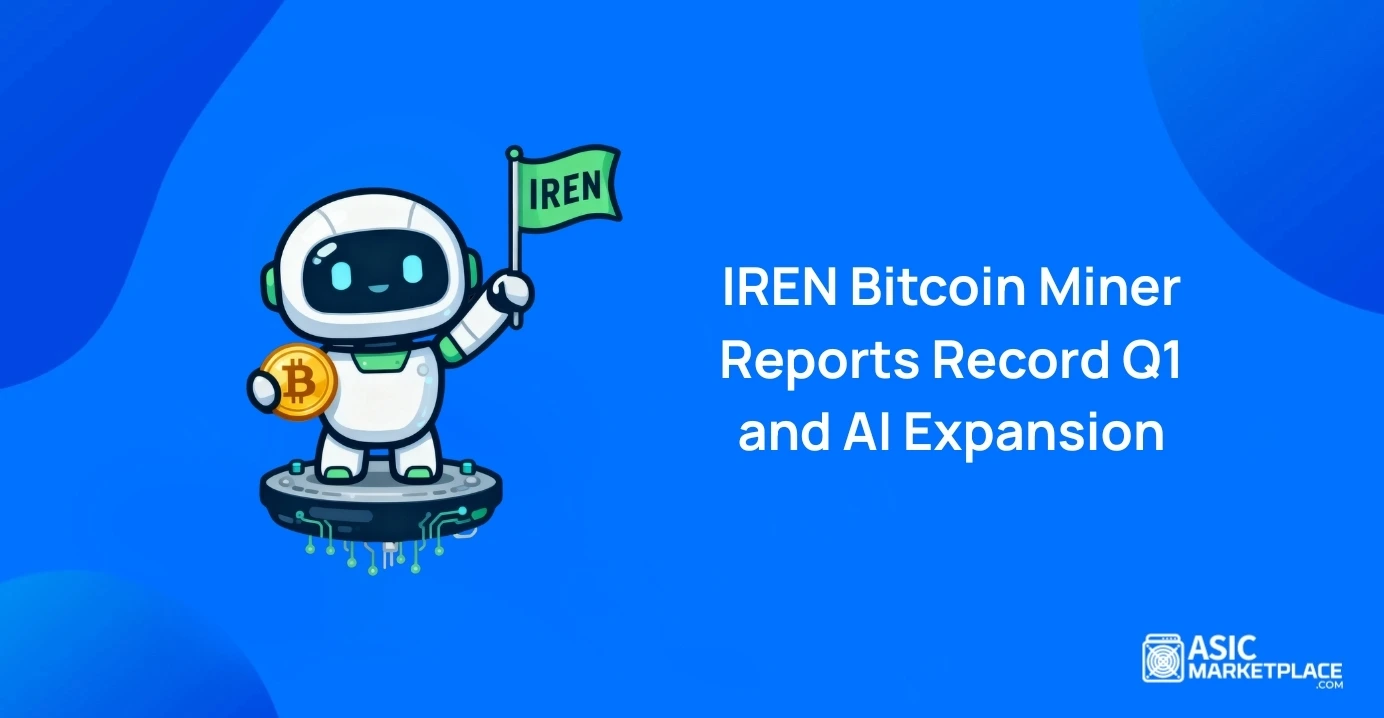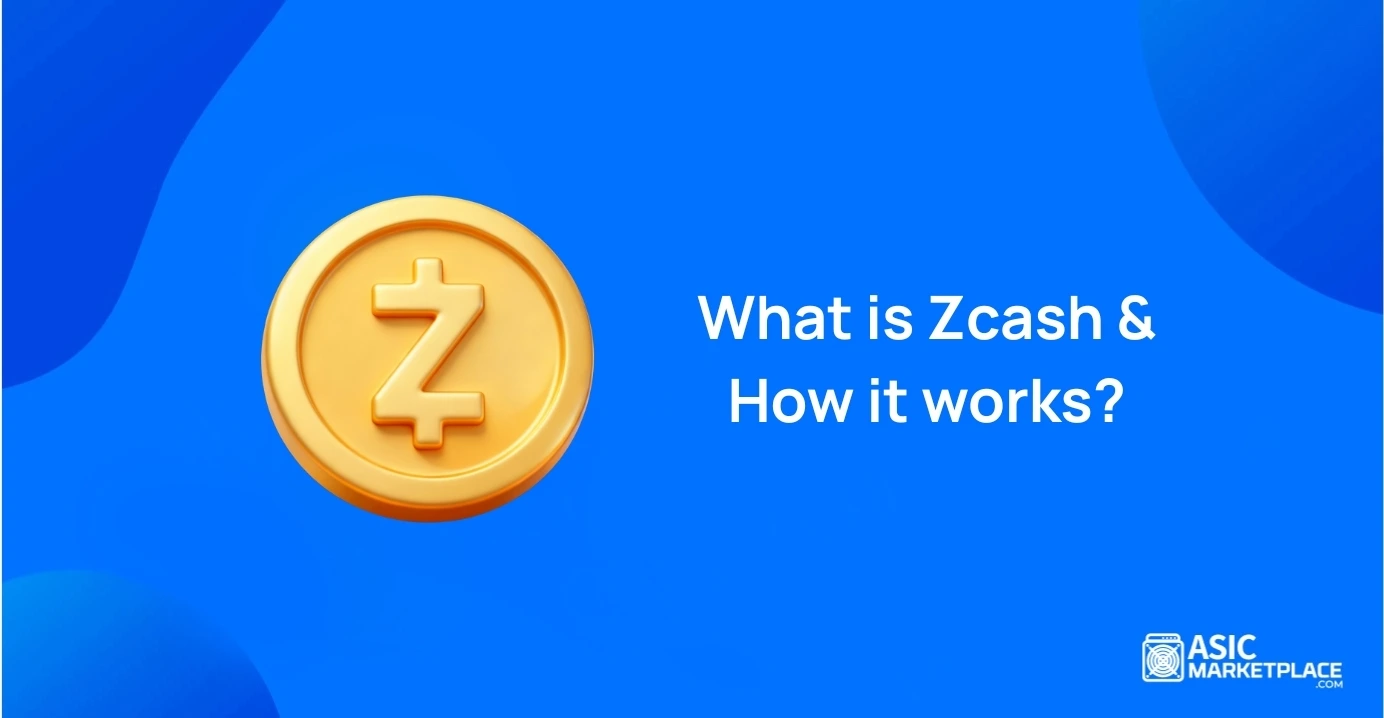Quick Summary
Crypto mining will still be profitable in 2025, but mainly for users with very low electricity costs and efficient hardware. For Bitcoin, it is absolutely necessary to have Layer-1 ASIC mining rigs. On the other hand, Ethereum Classic, Ravencoin, and other altcoin mining seem to be more suitable for GPU peripherals.
Hardware, electricity, and cooling are among the most significant costs; energy is the most decisive factor. Mining rewards are charged as income tax, while the sale of the coins can trigger capital gains.
Market volatility, rising difficulty, and legal issues are some of the risk factors that can diminish the miners’ profits; however, they are still manageable with appropriate planning. Miners can still have a chance to make it to the last in this vicious competitive environment if they enter the market with a small amount of capital, optimize operations, and expand wisely.
What Is Crypto Mining and Why Does It Matter?
Crypto mining is the process of making new digital coins and checking transactions on the blockchain. In simple terms, it’s how things like Bitcoin and Ethereum (before they switched to Proof-of-Stake) stay secure without a bank running the show.
Miners use their computers to solve tricky math problems, and when they solve one, they add a new block to the blockchain and get rewarded with new coins. It’s like solving puzzles and getting paid for it!
Mining matters because it serves two primary purposes:
1. Transaction Verification: Every payment in crypto must be checked to prevent double-spending. Miners confirm transactions and keep the network safe.
2. New Coin Creation: Mining is how new coins enter circulation, similar to how governments print money, but in a decentralized way.
Why Does Crypto Mining Exist?
Traditional financial systems rely on banks or governments to approve payments. Crypto removes this middleman. Instead, miners provide the “trust” layer by running the network. This system is called Proof of Work (PoW), which makes it hard to cheat the system. Without miners, cryptocurrencies would be vulnerable to fraud and attacks.
How Does Crypto Mining Work, Step by Step?
Crypto mining is like a big race, but instead of cars, it’s computers racing to solve challenging math problems. The first one to crack the puzzle gets to add a block of transactions to the blockchain and earns rewards for it.
It’s this process that helps keep the whole system running smoothly and securely. So, it’s kind of like a race where solving puzzles means getting paid!
Here’s the step-by-step breakdown:
Step 1: A Transaction Is Made
When someone sends Bitcoin or another cryptocurrency, the transaction gets broadcast to the network. For example, if Alice sends Bob 0.5 BTC, this data must be confirmed before it’s valid.
Step 2: Transactions Go to the Mempool
Unconfirmed transactions gather in a waiting area called the mempool. Miners look at this pool and choose which transactions to add to the next block. They usually pick transactions that offer higher fees since that means more profit.
Step 3: Miners Compete to Solve the Puzzle
Every miner tries to solve a mathematical problem known as a hash puzzle. This requires enormous computing power. The puzzle ensures that mining is difficult so that no single miner can easily dominate.
The puzzle is finding a number (called a nonce) that, when combined with the transaction data, produces a hash that fits the blockchain’s rules.
This process is Proof of Work (PoW) – miners must “prove” they did the computational work.
Step 4: A Block Gets Confirmed
Once a miner solves the puzzle, they announce it to the network. Other miners check the answer. If it’s valid, the block is added to the blockchain, making all included transactions permanent and irreversible.
Step 5: Miner Earns Rewards
The successful miner gets two rewards:
- Block Reward: A fixed number of coins (e.g., Bitcoin currently rewards 3.125 BTC until the next halving).
- Transaction Fees: Paid by users for faster confirmation.
Quick Visual: Mining in Action
| Step | Description | Who’s Involved | Reward/Result |
| 1 | Transaction made | Sender + Receiver | Pending transaction |
| 2 | Added to mempool | Network nodes | Transaction waiting |
| 3 | Puzzle solving (hashing) | Miners’ hardware | Compete for block |
| 4 | Block confirmed & added | Whole network | Blockchain updated |
| 5 | Miner rewarded | Winning miner | Coins + fees |
The rewards in crypto mining are what keep miners motivated to keep the blockchain secure. Here’s how it works: miners gather transactions, solve a tricky math puzzle with Proof of Work, confirm the block, and then get rewarded with coins and transaction fees.
This whole process makes sure that cryptocurrencies stay secure, decentralized, and fair. So, miners are basically helping keep everything in check, and they get paid for it!
What Are the Different Types of Crypto Mining?
Crypto mining can be done in several ways, depending on the hardware and strategy you choose. Each method has its pros, cons, and ideal use cases. To succeed in mining, you need to understand the main types: CPU mining, GPU mining, ASIC mining, and cloud mining.
1. CPU Mining:
CPU mining uses a computer’s processor to mine coins. It was common in Bitcoin’s early days, but it is now too slow and power-hungry. It is best for learning or small coins like Monero.
2. GPU Mining:
GPU mining uses graphics cards to solve hash puzzles efficiently. It offers a good balance of cost and profit but comes with high electricity use and hardware wear. It is best for altcoins like Ravencoin, or Flux.
3. ASIC Mining:
ASICs are machines built only for mining. They deliver the highest speed and efficiency, but work on limited coins. Costly and noisy, they suit serious miners of Bitcoin or Litecoin.
4. Cloud Mining:
Cloud mining rents power from providers instead of buying hardware. It removes setup costs but carries risks like scams and low control. It is best for beginners who want to test mining carefully.
Comparison Table of Mining Types
| Mining Type | Hardware Needed | Profit Potential | Best Use Case |
| CPU Mining | Standard computer | Very low | Testing, small coins |
| GPU Mining | Graphics cards | Medium-High | Altcoins |
| ASIC Mining | Specialized rigs | Very high | Bitcoin/Litecoin |
| Cloud Mining | None (rental) | Low-Medium (high risk) | Beginners, low budget |
When it comes to cryptocurrency mining, there are four main methods: CPU, GPU, ASIC, and cloud mining. CPUs aren’t really a thing anymore, but GPUs are still a solid choice because they balance versatility with decent earnings.
ASICs are the big players when it comes to saving energy, especially for the most popular cryptocurrencies. And then there’s cloud mining, which doesn’t require any hardware on your end, but it does come with some risks. So, each method has its pros and cons, depending on what you’re looking for!
Which Cryptocurrencies Are the Best to Mine in 2025?
If you want to mine crypto in 2025, some coins are clearly better bets than others depending on your hardware, electricity cost, and how much risk you’re willing to take. Below is a list of top cryptocurrencies to mine in 2025, what makes them good, and what to watch out for.
Top Coins to Mine in 2025 & Why They’re Good
Here are several cryptocurrencies that are among the best to mine right now, with important details for each.
| Coin | Block Reward / Key Data | Algorithm / Hardware Needed | Key Advantages | Main Challenges / Risks |
| Bitcoin (BTC) | ~3.125 BTC per block (after 2024 halving) | SHA-256, ASIC miners required | Highest market value, strong liquidity and demand; good long-term store of value | Very high hardware cost; high electricity usage; high competition; often only big miners can profit. |
| Monero (XMR) | ~0.6046 XMR per block | RandomX algorithm; CPU or GPU; ASIC-resistant | Privacy-focused; accessible for smaller rigs; relatively easier entry; resilient to ASIC centralization. | Lower payout compared to big coins; privacy coins face regulatory scrutiny; price volatility. |
| Litecoin (LTC) | ~6.25 LTC per block | Scrypt; ASIC recommended; some GPU mining still possible depending on region/costs | Established coin; less intense competition vs Bitcoin; merged mining possible with DOGE in some setups. | Requires good ASICs; electricity and cooling costs high; market price fluctuations. |
| Ravencoin (RVN) | ~2,500 RVN per block | KAWPOW algorithm; GPU or CPU; ASIC-resistant | Good option for hobby miners; community support; works well with moderate hardware. | RVN’s market value is lower than big coins; reward per block may not offset electricity in high-cost areas. |
| Dogecoin (DOGE) | 10,000 DOGE per block; block time ~1 minute. | Scrypt PoW. ASIC miners (Scrypt-dedicated) are required for profitability. GPUs yield very low returns. | Merged mining with Litecoin; stable reward; large community; many mining pools. | High electricity cost; rising network difficulty; unlimited supply → inflation pressure; ASIC hardware cost. |
| Aleo (ALEO) | ~69.15 ALEO per block; block time ~17.6 seconds. | Proof of Succinct Work (zkSNARK-based); best on GPUs and ASICs | Strong focus on zero-knowledge privacy; early-stage mining rewards still high; multiple hardware options (GPU/ASIC); developer momentum. | Newer network with evolving rules; proving now requires staking ALEO (ARC-0046), adding cost barriers; hardware may become obsolete as difficulty rises. |
| Ethereum Classic (ETC) | ~2.048-2.5 ETC per block (depending on network) | Etchash; GPU; some ASICs possible | Carryover from old Ethereum; stable community; good altcoin for GPU rigs. | Struggles with aggressive competition; price drops can reduce returns; hardware depreciation. |
How to Pick the Best Coin for You
Even though the above list has strong candidates, what’s “best” depends heavily on your particular conditions.
Here are the criteria you should evaluate:
1. Hardware you already have – GPU rigs vs ASIC vs CPU. If you already own GPUs, GPU-friendly coins (Monero, Ravencoin, Vertcoin) are less risky. Buying ASICs is expensive.
2. Electricity cost – Perhaps the single most significant factor. Even a slight difference in per-kWh cost can swing profit vs loss. If you’re in a region with cheap power (or renewable/hydro), more options open up.
3. Network difficulty & hash rate – As more miners join a network, difficulty goes up, reducing your share of rewards. Monitor how “crowded” or “competitive” a coin is.
4. Market price and volatility – Even if block rewards are high, if the coin’s price crashes, you may not recover your investment. Look for coins with reasonable liquidity.
5. Regulatory and environmental factors – Privacy coins may face delisting or regulation, and environmental costs or laws may affect operations.
In 2025, the best cryptocurrencies to mine usually include Bitcoin (for serious ASIC setups), Monero (for accessible CPU/GPU mining), Litecoin, Ravencoin, Zcash, and Vertcoin. If your hardware or power cost is limited, focus on ASIC-resistant and GPU/CPU-friendly coins. If you have high investment capability and low electricity costs, Bitcoin is likely your top long-term bet.
What Mining Hardware Should You Choose for Maximum Profit?
Choosing the proper mining hardware is essential for anyone getting into crypto mining. The device you pick will impact how efficient you are, how profitable you’ll be, and even your success in the long run.
Mining hardware falls into three main categories: ASICs, GPUs, and CPUs. Each one has its own strengths, costs, and risks, so it’s all about figuring out what works best for you and your goals!
1. ASIC Miners: Maximum Power for Bitcoin and Litecoin
ASICs (Application-Specific Integrated Circuits) are custom machines built solely for mining a specific coin. They deliver the highest performance and energy efficiency.
- Best For: Bitcoin (BTC), Litecoin (LTC), and other SHA-256/Scrypt coins.
- Pros: Highest profitability, breakneck hashing speeds, long-term use if maintained.
- Cons: Costly, noisy, need cooling, and are limited to specific coins.
Examples in 2025 (popular models):
- Bitmain Antminer S21 (~200 TH/s)
- Bitmain Antminer S23 (~318 TH/s)
- Antminer L11 Pro for Litecoin/Dogecoin (~9.5 GH/s)
2. GPU Rigs: Flexibility for Altcoins
GPU (Graphics Processing Unit) miners are versatile and can mine multiple coins by switching algorithms. They are less potent than ASICs but give flexibility if you want to move between projects.
- Best For: Ravencoin (RVN), Flux, Ergo.
- Pros: Can mine different coins, resale value for gamers, and easier to build small rigs.
- Cons: High upfront cost for multiple GPUs, less efficient than ASICs for major coins.
Popular GPUs in 2025:
- Nvidia RTX 4090 (~120 MH/s on Etchash)
- AMD RX 7900 XT (~90 MH/s on Etchash)
- Nvidia CMP 170HX (mining-only card)
3. CPU Mining: Entry-Level and Privacy Coins
CPU mining uses standard computer processors. While outdated for most coins, it still works for ASIC-resistant cryptocurrencies like Monero (XMR).
- Best For: Monero, RandomX coins.
- Pros: Low cost, anyone can start with a PC.
- Cons: Very low profitability, slow compared to GPUs/ASICs.
Popular CPUs for Mining:
- AMD Ryzen 9 7950X
- Intel Core i9-13900K
4. Factors to Consider Before Buying Hardware
When choosing hardware, consider:
- Hash Rate: The speed of solving puzzles (higher is better).
- Energy Efficiency: Hashes per watt; electricity costs can kill profits.
- Initial Cost: ASICs can cost $2,00-$6,000+, while GPUs range from $500-$1,800 each.
- Noise & Cooling: ASICs are loud and hot; proper ventilation is essential.
- Resale Value: GPUs can be resold for gaming; ASICs are harder to resell.
Hardware Comparison Table
| Hardware | Example Model | Hash Rate | Power Use | Best For | Profit Potential |
| ASIC | Antminer S21 | 200 TH/s | 3,500 W | Bitcoin | Very High |
| GPU | RTX 4090 | 120 MH/s | 400 W | Altcoins | Medium-High |
| CPU | Ryzen 9 7950X | ~15 kH/s | 200 W | Monero | Low |
The best mining hardware in 2025 depends on your goals: ASICs are most profitable for Bitcoin and Litecoin, GPUs are flexible for altcoins like Ravencoin, and CPUs are mainly for privacy coins like Monero. For maximum profit, choose hardware that balances hash rate, energy efficiency, and electricity cost in your location.
How Do Mining Pools Work and Should You Join One?
Mining solo may sound exciting, but in reality, it’s tough to earn rewards on your own – especially for big coins like Bitcoin. That’s where mining pools come in. Mining pools are groups of miners who combine their computing power to increase the chances of solving blocks. Rewards are then shared among all participants.
How Do Mining Pools Work?
1. Miners Join Together
- You connect your mining hardware (ASIC, GPU, or CPU) to a pool server.
- Your machine contributes hash power to the collective pool.
2. Pool Solves Blocks
- The pool’s combined power competes to solve blockchain puzzles.
- When a block is found, the pool gets the block reward and transaction fees.
3. Rewards Are Shared
- Payouts are split among members according to their contributed hash power.
- This ensures even small miners earn consistent, smaller amounts rather than waiting months (or years) for a solo reward.
Common Pool Reward Systems
- PPS (Pay-Per-Share): Fixed payout for each valid share you contribute, regardless of whether the pool finds a block. Stable, but usually has higher fees.
- PPLNS (Pay-Per-Last-N-Shares): Rewards depend on the number of shares you’ve contributed in the last round. Riskier but often more profitable in the long run.
- PROP (Proportional): Rewards are split proportionally based on your work during each round.
Pros of Mining Pools
- More Frequent Payouts: Instead of waiting for one block reward, you get a steady income.
- Lower Variance: Less risk of “luck” since rewards are shared.
- Accessibility: Makes mining worthwhile even with smaller hardware.
Cons of Mining Pools
- Pool Fees: Most pools charge 1-3% of earnings.
- Centralization Risk: Large pools can control a significant share of the network’s hash rate, which goes against crypto’s decentralization goals.
- Trust Issues: Some pools may misreport contributions or rewards. Always use reputable providers.
Top Mining Pools in 2025
| Pool Name | Supported Coins | Reward System | Fee % |
| F2Pool | BTC, LTC, ZEC | PPS+ | ~2.5% |
| AntPool | BTC, BCH, LTC | PPS, PPLNS | ~2% |
| ViaBTC | BTC, LTC, ETHC | PPS+, PPLNS | ~2% |
| MoneroOcean | XMR | PPLNS | ~1% |
Should You Join One?
Yes – joining a mining pool is usually the more intelligent choice unless you have an industrial-scale operation. Pools give you steady payouts, lower your financial risk, and make mining viable for hobbyists and small-scale miners. Just be sure to choose a trusted pool with transparent fees, a good reputation, and servers close to your region (to reduce latency).
Mining pools work by combining miners’ hash power to solve blocks together and then splitting rewards based on contribution. For most miners, joining a pool is essential for consistent payouts and lower risk, though fees and centralization are trade-offs to consider.
What Mining Software Is Best for Beginners and Experts?
Once you’ve chosen your mining hardware and decided whether to mine solo or join a pool, the next step is to pick the correct mining software. Mining software acts as the “bridge” between your hardware and the blockchain network (or pool). It manages your resources, executes algorithms, and reports your contribution.
Different software tools are designed for other coins, hardware types, and experience levels. Below, we’ll cover the most popular options in 2025.
Mining Software for Beginners
1. CGMiner
CGMiner ranks among the oldest and most reputable mining tools in the market. As a command-line-based software, it lacks a graphical interface, but users can exercise complete control over their mining activities with it.
Moreover, this program, by means of supporting ASICs, FPGAs, and GPUs, is very adaptable and modifiable. In any case, the complexity of the learning experience is the main reason why beginners would find it difficult to use this software.
It is aimed at the advanced users who wish to have total control and be able to manage their mining configurations with adaptability.
2. BFGMiner
BFGMiner is quite like CGMiner, but it is tailored more for FPGA and ASIC mining. It has a modular design, the most sophisticated monitoring tools, and the provision for remote interfaces, which collectively make it possible for miners to personalize their hardware and then efficiently manage it.
The BFGMiner program, however, can be a bit complicated for new users to grasp, which means it is thus more appropriate for the miners who are seasoned with the use of ASICs or FPGAs and who desire to have more mining hardware control.
3. Awesome Miner
One of the great features of Awesome Miner is the fact that it is able to handle multiple mining engines, which makes it a perfect software for users who have numerous mining rigs.
It allows users to have a centralized dashboard, which makes it easier for them to supervise their activities, automatically switch coins to bring the most profits, and also has remote monitoring that will give users more mobility.
It, however, has a feature whereby its full capacity can only be realized on a Windows system. It is thus ideal for a user who has different mining rig setups and wants to have the most efficient management of the rigs through one interface.
4. XMRig
XMRig is specialized mining software designed for Monero (XMR) and other coins based on the RandomX algorithm. It is particularly efficient for CPU mining and supports GPU setups.
While XMRig is highly effective, it is limited to fewer coins compared to more general-purpose software. This makes it the best choice for miners who focus on privacy coins, especially Monero, and who value efficiency and simplicity in mining those specific assets.
Comparison Table
| Software | Best For | Interface | Coins/Algorithms | Difficulty Level |
| NiceHash | Beginners | GUI/Dashboard | Multi-coin via marketplace | Easy |
| EasyMiner | Beginners | GUI | Litecoin, BTC forks | Easy |
| CGMiner | Experts | CLI | BTC, ASIC mining | Hard |
| BFGMiner | Experts | CLI | FPGA, ASIC | Hard |
| Awesome Miner | Multi-rig setups | GUI | Wide range | Medium |
| XMRig | Privacy coins | CLI | Monero (RandomX) | Medium |
The best mining software for the year 2025 varies according to your knowledge and objectives. Newcomers may find NiceHash or EasyMiner more suitable as a simple way to get started.
On the other hand, advanced users can get more from CGMiner, BFGMiner, or XMRig as these programs allow them to tailor and optimize their mining rig.
Users with more than one mining rig can use the centralized management provided by Awesome Miner to control all their rigs from one place.
How Much Does It Cost to Mine Crypto in 2025?
In 2025 the total expenses for crypto mining would depend on the following three primary areas: the initial hardware purchase, the cost of power and the regular servicing. Since the margins for profit are slimmer nowadays in comparison to the past, being aware of the costs is a must-have condition.
1. Hardware Costs
Mining hardware is the largest upfront investment. The price depends on whether you choose ASICs, GPUs, or CPUs.
- ASIC miners: $2,000-$6,000 per unit (high-end models for Bitcoin or Litecoin).
- GPU rigs: $500-$1,800 per GPU; full rigs often $3,000-$8,000.
- CPU mining setups: $500-$1,000 for a strong CPU-based system.
If you want to compete in Bitcoin mining, ASICs are unavoidable. For altcoins, GPUs are more flexible but require multiple units to be effective.
2. Electricity Costs
- Electricity is often the biggest ongoing expense. Mining consumes a lot of power, and profitability heavily depends on your kWh rate.
In the U.S., average residential rates are around $0.15/kWh in 2025. - In cheap-energy regions (Kazakhstan, parts of Africa, South America), rates can be as low as $0.03-$0.06/kWh.
- At industrial scale with renewable energy, some miners pay under $0.02/kWh.
For example:
- An Antminer S21 uses about 3,500W. At $0.15/kWh, that’s ~$12.60/day ($378/month).
3. Cooling and Maintenance
Mining rigs generate enormous heat. Without proper cooling, hardware performance drops and failure rates rise. Costs include:
- Cooling systems: Fans, AC units, or immersion cooling (anywhere from $200 for small setups to $10,000+ for farms).
- Maintenance: Replacement parts, power supplies, and labor – often 5-10% of yearly costs.
4. Pool Fees and Software Costs
If you mine through a pool, expect fees of 1-3% of your earnings. Mining software itself is often free, but management tools or advanced dashboards sometimes charge subscriptions.
Cost Breakdown Example (ASIC Miner, U.S. Electricity)
| Expense Type | Monthly Cost (Est.) |
| Hardware (S21 amortized over 2 yrs) | $200 |
| Electricity (~3,500W @ $0.15/kWh) | $378 |
| Cooling + maintenance | $50-$100 |
| Pool Fees | $20-$40 |
| Total Monthly Cost | ~$650-$720 |
In 2025, the cost to mine crypto typically ranges from $500 to $700 per month for one ASIC rig in high-cost regions and significantly less in countries with cheaper power. Initial hardware can cost thousands, but ongoing expenses are dominated by electricity and cooling. Profitability depends almost entirely on your energy cost per kWh and hardware efficiency.
How Do You Calculate Crypto Mining Profitability?
First, you need to determine whether mining is a good source of profit. To achieve profitability, you only need to consider your expenses and your rewards.
Let’s break it down step by step.
1. Key Profitability Formula
The basic calculation is:
Profit = (Block Rewards + Transaction Fees) – (Electricity Costs + Hardware Costs + Pool Fees)
2. ROI (Return on Investment)
ROI tells you how long it will take to recover your initial hardware investment.
ROI Formula:
ROI = Hardware Cost ÷ Monthly Net Profit
Example:
- Hardware cost: $4,000 for an ASIC miner
- Net monthly profit: $400
- ROI = $4,000 ÷ $400 = 10 months to break even.
3. Break-Even Point
- The break-even point is when your total mining income equals your total investment. After this point, all earnings are profit (minus electricity).
- If you spend $6,000 on hardware and $600/month on electricity but earn $900/month from mining, your break-even will arrive in ~20 months.
4. Energy Efficiency
Mining profitability heavily depends on hashes per watt. More efficient hardware produces more work with less electricity.
Example:
- Antminer S21: 200 TH/s at 3,500W = ~57 J/TH
- Older Antminer S19: 95 TH/s at 3,250W = ~34 J/TH
The S21 is more profitable in the long term, even if the initial cost is higher.
5. Real-World Example (2025, Bitcoin Mining)
| Factor | Value |
| Hardware | Antminer S21 ($4,000) |
| Hashrate | 200 TH/s |
| Power Usage | 3,500W |
| Electricity Rate | $0.12/kWh |
| Daily Power Cost | ~$10 |
| Daily Mining Reward (avg) | ~$15 |
| Daily Profit | ~$5 |
| Monthly Profit | ~$150 |
| Break-Even (Hardware + Costs) | ~26-28 months |
Note: This assumes stable Bitcoin price and network difficulty, which in reality change constantly.
6. Tools for Profitability Calculations
Instead of manual math, most miners use online calculators. Popular options:
- MiningNow – provides live ASIC rankings, ROI calculators, and profitability insights across different coins and hardware.
- WhatToMine – great for GPU mining comparisons.
- CryptoCompare Mining Calculator – tracks real-time BTC/ETHC profits.
- ASIC Miner Value – evaluates ASIC-specific hardware earnings.
To calculate mining profitability in 2025, subtract electricity, hardware, and pool fees from your block rewards. Then, use ROI and break-even analysis to see how long it will take before you earn profits. Energy efficiency and electricity price are the most critical factors – profitable mining depends more on cheap power than raw hashrate. You can also use tools like Mining Now for accurate profit calculations.
What Are the Legal and Tax Issues in Crypto Mining?
Crypto mining isn’t just about the hardware and energy you’re using – it’s also about understanding the legal and tax side of things.
In 2025, mining will be legal in most countries, but the rules can vary a lot depending on where you are. It’s essential to stay on top of these regulations, not only to avoid any legal trouble but also to make sure your mining operation is sustainable and profitable in the long run!
1. Is Crypto Mining Legal Everywhere?
- Legal in most countries: The U.S., Canada, Australia, and most of Europe permit mining as long as you follow electricity and business regulations.
- Restricted or banned: Some countries with energy shortages or strict crypto laws (e.g., China, Algeria, Nepal) have banned or heavily limited mining.
- Gray areas: In certain regions, mining is tolerated but not officially regulated, meaning rules could change quickly.
Tip: Always check local laws before setting up a rig. If you consume large amounts of electricity, your utility company may require permits.
2. Taxation on Mining Rewards
Mining rewards are usually treated as income at the time you receive them. Later, when you sell or trade mined coins, you may also owe capital gains tax if the price has increased.
- Income Tax: The fair market value of the coins on the day you receive them is taxable as income.
- Capital Gains Tax: If you later sell those coins at a higher price, the profit is taxed again.
- Business vs. Hobby Mining: If mining is your business, you may deduct expenses (electricity, hardware depreciation, cooling). However, deductions may be limited if it’s a hobby.
3. Common Legal Issues in Mining
- Energy Theft: In some places, miners illegally tap into subsidized or free electricity. This is heavily punished.
- Noise & Zoning Laws: Large mining farms create noise and heat, which can lead to local complaints or legal actions.
- Environmental Rules: Some countries are considering carbon taxes or renewable energy mandates for miners.
Quick Legal Overview Table
| Issue | How It’s Treated in Most Countries (2025) |
| Legality | Generally legal unless explicitly banned |
| Mining Rewards | Taxed as ordinary income |
| Selling Coins | Taxed as capital gains |
| Energy Use | Regulated like other high-consumption industries |
| Deductions | Allowed for businesses, limited for hobbyists |
Crypto mining will be legal in most countries in 2025, but it will be subject to tax and regulation. Mining rewards are taxed as income, and selling mined coins can trigger capital gains tax. Miners must also comply with local energy, zoning, and environmental laws. Careful record-keeping and tax reporting are essential to avoid penalties.
How Can You Optimize Your Mining Setup for Higher Profits?
Being successful at mining isn’t just about having the most potent hardware; it’s about customizing your setup to make it as practical, durable, and flexible as possible. In 2025, optimization is more critical than ever.
With higher energy costs and tougher competition, getting the most out of your rig is crucial if you want to stay ahead of the game and keep your operation running smoothly.
1. Lower Electricity Costs
Electricity is the most significant ongoing mining expense. Profitability improves instantly when power rates are reduced. Location plays a key role, as regions with cheap hydro or renewable energy cut costs. Using solar or wind lowers dependence on the grid, while off-peak mining in areas with cheaper night rates can further save money.
2. Improve Cooling and Airflow
Heat is one of the factors that reduces the capability of hardware to perform at its best and also its lifespan. Typically, hardware with simple designs uses fans and open-frame cases to allow airflow.
At the same time, high-end versions, such as liquid or immersion cooling, are the user’s favorites as they help in noise control and also extend the life of the hardware. The location has a significant impact as well, for both cold and ventilated places are the best for the machines, and they should be far from the sun’s rays.
3. Optimize Mining Software
Fine-tuning mining software can boost performance. Overclocking GPUs increases hashrate but must be balanced against power use. Undervolting saves electricity while keeping stable output. Intelligent software like NiceHash or Awesome Miner can switch algorithms to mine the most profitable coin automatically.
4. Regular Maintenance and Monitoring
Mining machines require daily inspections to ensure they are operating without the risk of overheating, dust accumulation, or power failures. Applications for off-site monitoring are extremely valuable as they manage the machines and provide the correct information about the process in real time. Uninstalling defective parts, such as the power supply or the fan, will ensure that you do not lose your earnings abruptly.
Optimization Checklist
| Area | Optimization Strategy | Profit Impact |
| Electricity | Cheap/renewable/off-peak power | High |
| Cooling | Fans, liquid, immersion systems | Medium |
| Software | Overclock, undervolt, auto-switching | Medium-High |
| Mining Pool | Low fees, nearby servers | Medium |
| Maintenance | Daily checks, dust removal, monitoring | Medium |
To optimize mining profits in 2025, focus on cutting electricity costs, improving cooling, fine-tuning mining software, joining efficient pools, and performing regular maintenance. Even minor improvements in efficiency can mean significant differences in long-term profitability.
What are the risks of crypto mining, and how can you avoid them?
Crypto mining can make you money, but it also comes with its fair share of risks. Whether it’s financial losses or legal issues, there are obstacles every miner has to deal with. The trick is understanding these risks and knowing how to handle them.
If you take the time to learn and plan ahead, you can avoid those expensive mistakes and set yourself up for success.
1. Financial Risks
- Hardware depreciation: Mining rigs lose value quickly as new models are released.
- Price volatility: Coin values fluctuate, and a sudden drop can make mining unprofitable.
- Rising difficulty: As more miners join, block rewards become harder to earn.
How to avoid:
- Choose versatile GPUs with resale value.
- Diversify coins mined to hedge against market swings.
- Monitor difficulty levels before investing heavily.
2. Electricity and Energy Costs
Mining rigs consume large amounts of electricity, which can erase profits in high-cost regions.
How to avoid:
- Calculate profitability based on your local kWh rate.
- Explore renewable energy options like solar or hydro.
- Use efficient hardware and undervolting techniques.
3. Legal and Regulatory Risks
Not all countries allow mining. Some restrict it due to energy concerns or anti-crypto laws. Mining without understanding local laws can lead to fines or shutdowns.
How to avoid:
- Research your country’s mining regulations.
- Register as a business if required.
- Keep accurate tax records of rewards and expenses.
4. Technical Risks
Mining setups are prone to technical failures.
- Overheating: Can damage rigs permanently.
- Downtime: Hardware or internet failures reduce earnings.
- Hacks/Malware: Mining malware or pool scams can steal profits.
How to avoid:
- Use proper cooling and ventilation.
- Install surge protectors and backup internet.
- Join reputable pools and keep systems secure with updated software.
5. Environmental and Social Risks
Mining consumes high amounts of energy, raising environmental concerns. Some governments target miners for contributing to carbon emissions. Additionally, noise and heat can cause problems in residential areas.
How to avoid:
- Invest in renewable energy where possible.
- Use quieter rigs or soundproofing.
- Operate in industrial areas instead of residential homes.
Risk Summary Table
| Risk Type | Main Problem | How to Avoid |
| Financial | Price drops, hardware loss | Diversify, buy efficient rigs |
| Energy | High electricity bills | Cheap power, renewables, undervolting |
| Legal/Tax | Fines, bans, penalties | Follow laws, track taxes |
| Technical | Heat, hacks, downtime | Cooling, backups, security |
| Environmental | Pollution, complaints | Renewables, better location |
The main risks of crypto mining are financial losses, high electricity costs, legal restrictions, technical failures, and environmental concerns. To avoid them, miners should use efficient hardware, follow regulations, secure their systems, and manage costs carefully.
Conclusion
Cryptocurrency mining in 2025 is no longer a “get-rich-quick” scheme like before, but it is still a feasible way for those who have a clear plan to make a profit. The winning formula is to meticulously manage your expenses, equip yourself with state-of-the-art hardware, and obtain electricity at the lowest possible rate.
Moreover, miners need to ensure that they operate in accordance with the tax laws and be prepared for market changes. Although volatility and increased mining difficulty have been troubling factors for miners, small-scale players who start small and develop their business by investing wisely can still make a decent profit.
Moreover, mining with patience, perseverance, and sound judgment can not only be a crypto hobby but also a long-term crypto-future investment.
Check out the latest ASIC Miners 
Check Now 
FAQs on Crypto Mining
-
Can you still make money with mining in 2025?
Yes, but it depends on electricity rates, hardware efficiency, and coin prices. In high-cost regions, profits are slim, while miners in cheap-energy locations can still earn good returns.
-
What is the easiest coin to mine?
Altcoins like Ravencoin, Ergo, and Ethereum Classic are easier to mine with GPUs. Bitcoin requires ASICs and is harder for beginners.
-
How long does mining hardware last?
ASICs typically last 3-5 years, while GPUs can last longer with proper cooling and maintenance. Heavy usage may shorten lifespan.
-
Is cloud mining worth it?
Usually no. Many cloud mining services are scams or offer very low returns. If you choose one, stick to verified providers and read contracts carefully.
-
Do you need fast internet for mining?
No. Mining requires only a stable connection, not high speed. Even 5 Mbps broadband is enough for most setups.
-
Can mining damage your PC or GPU?
Yes, if you don’t manage heat. Mining runs GPUs at high loads for long hours, which can reduce lifespan if cooling is poor.
-
What is the difference between solo mining and pool mining?
~ Solo mining: You keep full rewards but have low chances of winning blocks.
~ Pool mining: Multiple miners share rewards, providing steady income.
Peter Davis is an accomplished blockchain analyst and technical writer with over four years of experience in the cryptocurrency sector. His expertise spans blockchain infrastructure, ASIC mining hardware, and digital asset markets, where he is recognized for translating complex technical concepts into precise, insightful, and accessible analysis for a global audience.
With a strong foundation in technical research and market evaluation, Peter’s work focuses on bridging blockchain innovation with practical mining and investment strategies. His writing is defined by analytical depth, clarity, and a focus on data-backed insights that guide both professionals and enthusiasts through the evolving crypto landscape.
Driven by a deep passion for Web3 technology and decentralized systems, Peter continues to produce authoritative, research-driven content that enhances understanding of ASIC mining performance, blockchain efficiency, and the broader dynamics shaping the future of digital finance





